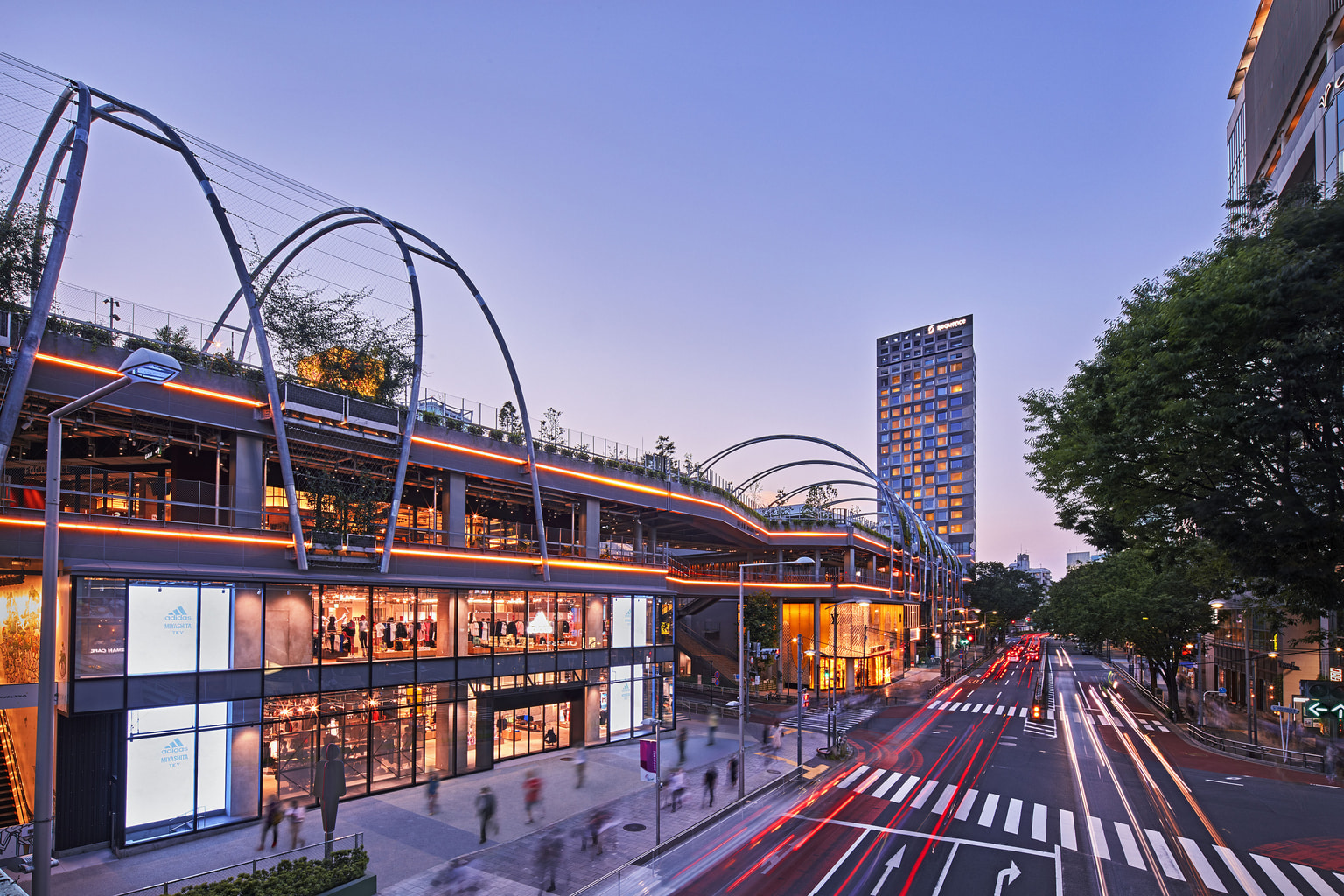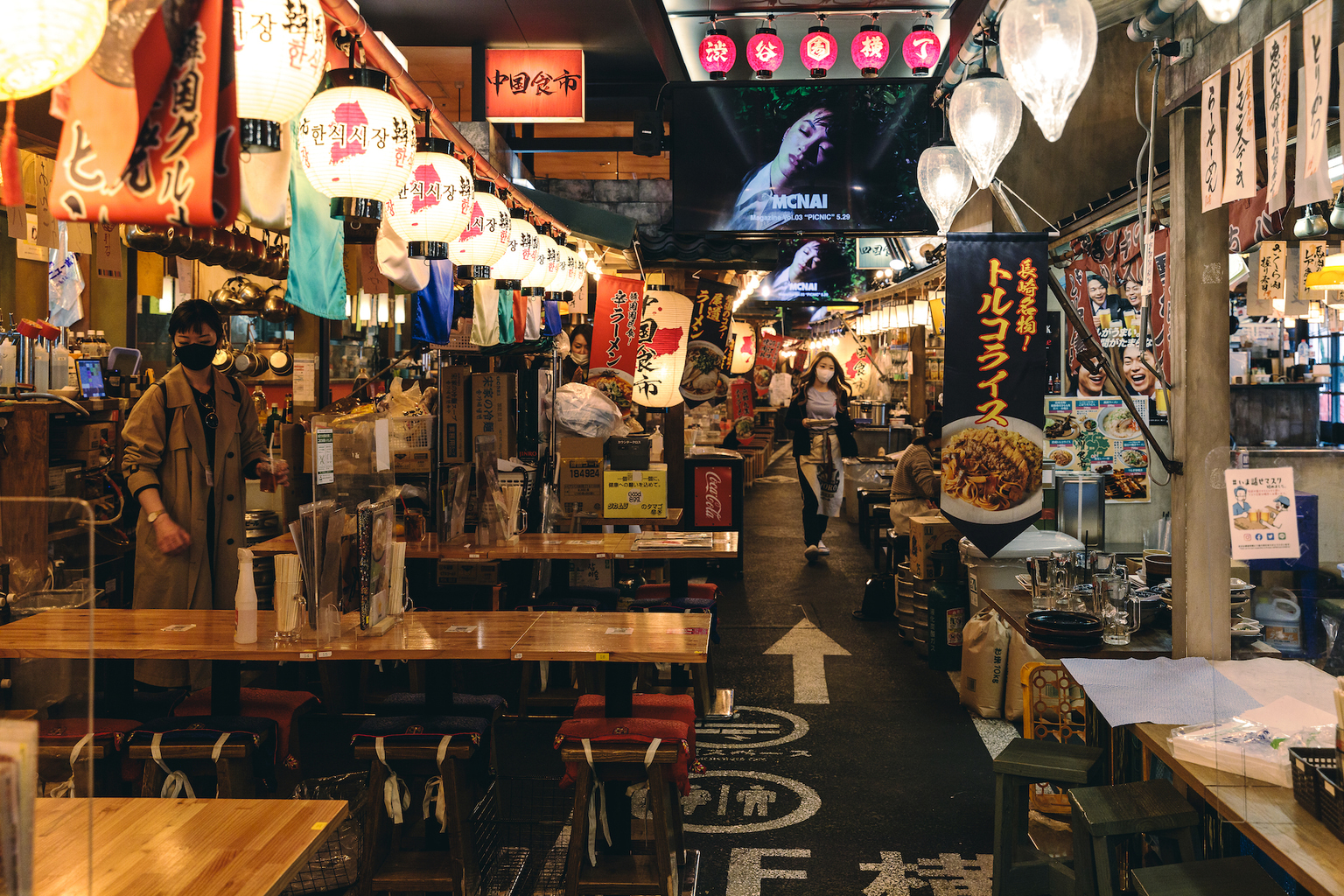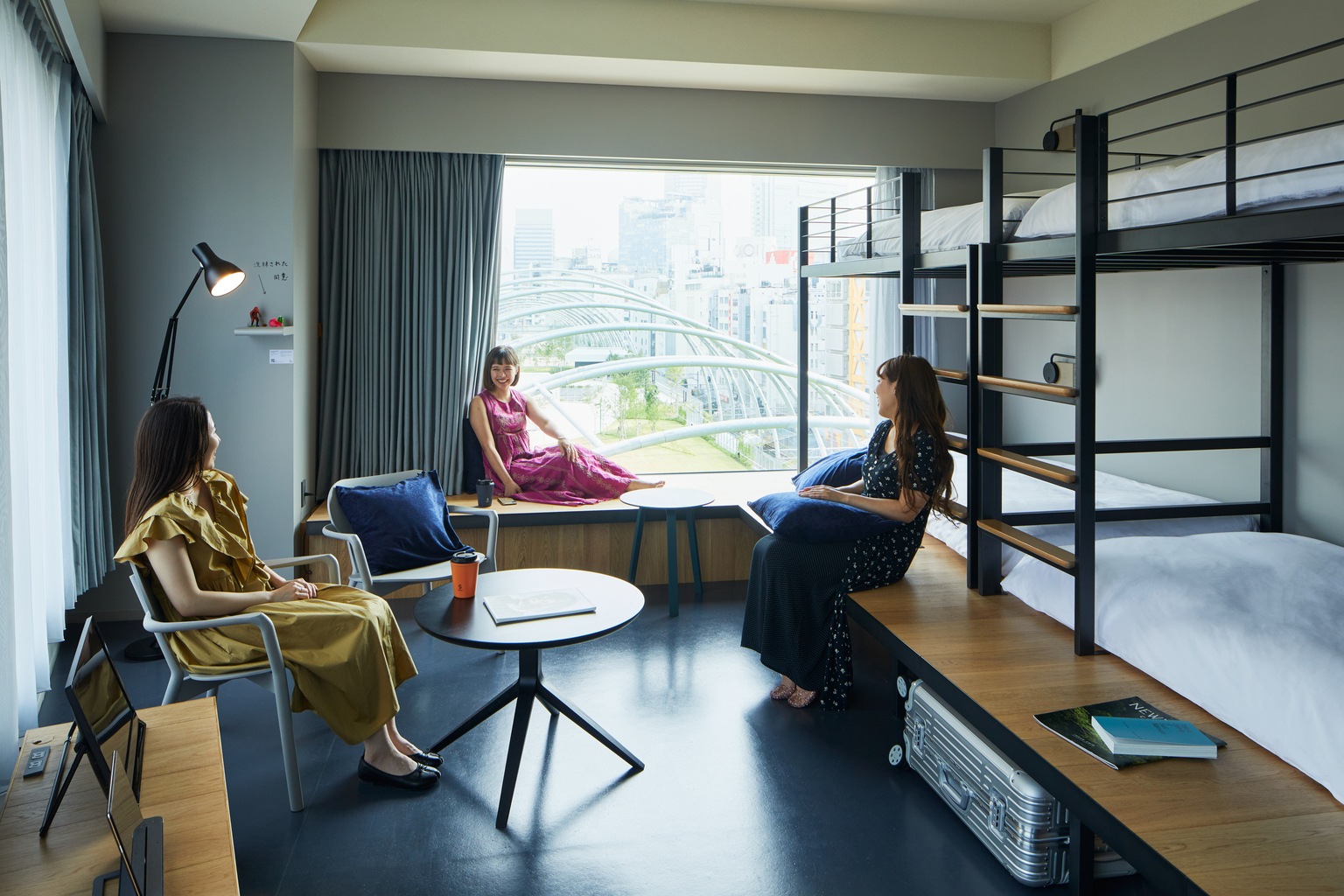The completion of the new and improved Miyashita Park marked the beginning of the end of Shibuya’s seemingly endless transformation. The area, with its revitalized nightlife and fashion districts, has long cultivated the very foundation of Tokyo street style and culture. The complex, which comprises a few dozen retail businesses, restaurants, a hotel and a promenade, reopened to the public in the summer of 2020 after a long period of renovations.
In the approximately two years since its unveiling, Miyashita Park has grown to be a favorite haunt for Tokyo residents due to its diverse offerings, but also its accessibility and seamless incorporation within Shibuya’s organized chaos. For some, it is the epitome of Tokyo futurism and gives a rare glimpse at what the metropolis could look like 50 or 100 years from now.

Built to Walk
Lead architectural engineering firm Takenaka Corporation collaborated with powerhouse Nikken Sekkei for the reimagination of Miyashita Park. The land, which served as a public park since 1964, was long overdue a revamp as its aging infrastructure caused safety concerns in the event of a natural disaster. In 2017, the park closed for construction before reopening during the Covid-19 pandemic.
The new and improved structure that city dwellers and travelers see today resolved not only security concerns but made a statement on the future of Tokyo architecture and lifestyle. Miyashita Park was, in a way, Takenaka Corporation and Nikken Sekkei’s proposal of a central area that could harmoniously combine public, private and commercial spaces for all to enjoy.
Creating “walkable architecture” was a key theme for the project. Miyashita Park nearly gets a full score when it comes to applying walkability principles, from providing clear and continuous pedestrian access to orienting the facilities in a way that makes the rooftop park a key feature. Keeping the park accessible was important to make it a space that encourages and supports public activities (versus gatekeeping the area for retail and real estate use).
Miyashita Park follows the overall trend of Tokyo architecture in recent years, which focuses on growing upwards. Despite being moved up four floors, it’s still easily accessible and helps direct the flow of people walking to and from Shibuya and Harajuku neighborhoods.

The Night is Short
Walk on, girl. Although the shopping portion of Miyashita Park closes its doors at 9pm on most days, the complex provides plenty of eateries to keep the party going after hours. On the south side is Shibuya Yokocho, a stretch of restaurants that replicates the ambience and atmosphere of traditional nightlife districts.
Choose from 19 restaurants that take you on a culinary journey around Japan with their offerings of regional delicacies to suit all tastes and cravings. Half the tenants also have terrace seating, which is especially appreciated in the warmer months, but remains operational during the winter. Although you can pick one place to settle for the evening, part of the fun of Shibuya Yokocho is hopping between restaurants to sample a little bit of everything.

Making Street Culture Mainstream
Tokyo’s mild winters allow residents and tourists alike to enjoy the various parks around the metropolitan area. In only a few years since its reopening, Miyashita Park’s rooftop park has become one of the most adored greenspaces in Shibuya. Spread across an area over 10,000 square meters, it’s a great place for families, city dwellers and visitors to kick back and relax.
There is an area dedicated to action sports such as skateboarding and rock climbing on one end of the park. For skateboarders especially, this has become a welcome safe space. While Tokyo street laws forbid skateboarding on most streets and sidewalks, this space allows for some adrenaline-seeking in a safe and breezy environment.

On the other end of the park is a simple open area. You’ll find a coffee shop and a few benches to rest your feet and take in the surrounding city views. It’s best to stop by on weekends, as this time is when most community events take place. Throughout the year, enjoy intimate-sized festivals, pop-up shops and food trucks that are otherwise hard to catch in the city. Truly a multipurpose, multicultural space for Shibuya culture to continue to thrive.
Finally, there is Sequence, a hotel that allows out-of-towners to stay in the very heart of this Tokyo neighborhood. On the fourth floor, you’ll find a coffee shop (yes, another one) and plenty of room to work remotely if needed. The building also houses Chinese restaurant Dongxi on the 5th floor, and night lounge and rooftop bar Soak on the 18th. Sequence is unique in that it allows for a late 2pm checkout, perfect for night owls that want to make the best of after-hours Shibuya.
Visit the Miyashita Park website for more information on stores, restaurants and more.
Shibuya Yokocho has its own website where you can find a list of all participating eateries.
For hotel reservations, visit the official Sequence Hotels website.
Related Posts
- Party Like It’s 1985 at Shibuya Yokocho
- The Japanese Architects That Shape the Country
- Harakado: Harajuku’s New Must-visit Spot
Updated On March 4, 2024

-1024x683.jpeg)







